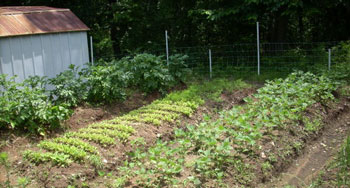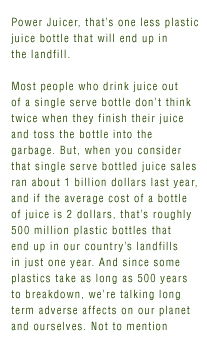I do not believe that living off the land has to be conceptualized as pastoral idealism. All I think it means is giving back to the Earth as much as we take. I am not sure that we have to give up on technology to accomplish Earth centered practices. What we have to stop is growth. Still there are many people who if given the chance would go “back” to a rural existance. Then there are those that really want to go native:
http://www.ehow.com/how_136589_live-land.html
How to Live Off the Land
Instructions
-
Step 1
Clarify your objectives. Is your goal to experience a short-term wilderness retreat, live in harmony with nature for the long haul or just survive a reality-show stint in the South China Sea? What level of technology and tools will you employ: GPS device or compass and sextant? Zippo or flint and steel?
-
Step 2
Enroll in a wilderness preparedness course, such as those offered by Outward Bound (outwardbound.com) or the National Outdoor Leadership School (www.nols.edu). You will learn vital skills such as navigating with a map and compass, shelter construction and first aid.
-
Step 3
Choose an environment with significant opportunities for food, water and shelter. Solo adventures are really only feasible in warm or temperate climates. Abundant water is essential to survival. If you don’t have a reliable source of clean water, become expert at purifying water in large quantities.
-
Step 4
Become expert at starting a fire without matches. Your best bet is probably the bow-drill technique. For detailed instructions on this, go to www.wmuma.com/tracker/skills/fire/bowdrill/.
-
Step 5
Learn how to make a basic shelter. Review 474 Survive Being Lost for instruction. Choose a camping spot with easy and reliable water access. Without a mechanical system of delivery and storage, obtaining water may be your biggest daily task.
-
Step 6
Know how to use, repair and sharpen basic tools. Living off the land requires that you get very close to that land. Axes, knives, shovels, hoes and fishing gear will be essential to your survival.
-
Step 7
Study the flora and fauna of your intended destination. Be able to identify edible plants and practice locating, harvesting and preparing them long before you set out.
-
Step 8
Learn to see and feel changes in the weather and to take appropriate action.
-
Step 9
Practice whatever hunting method you choose until you are an expert. Hunting is difficult and unpredictable; fishing is more reliable and requires less physical effort.
-
Step 10
Learn how to process skins in order to make clothing. Practice harvesting reeds and grasses in order to make baskets and rope.
-
Step 11
Keep an apartment in Manhattan for those times when you need to get away from it all.
:}
I think it is amazing how much you have to know and how skillled you have to be to do “back to nature” well.
Then there are the people who want a house and an outhouse instead of a tent:
http://www.organic-gardening-and-homesteading.com/self_reliance.html
Self Reliance – How to Live Off Your Homestead
Is self reliance your dream? More people are turning to homesteading, depending upon themselves for their food and making a living off their land. If you long to get off the office treadmill and onto your own land, here are some crucial steps you should take to pursue your life of freedom
Get Out of Debt
As any farmer will tell you, unless you own a corporation with hundreds, if not thousands of acres, you won’t make a fabulous income living off the land. Those farmers who do own hundreds of acres and thousands of dollars worth of equipment (along with the mortgages to prove it) are struggling to get by. The secret is to live simply and downsize.
Sell that newer car with those high car payments and buy a used model, preferably one with no payments. Avoid fast food and cook at home instead. Learn to live on a budget and cut back on unnecessary expenses. Then use that extra money to pay off your loans.
Get Some Land
You don’t need hundreds of acres, but if you want to live off your land, you will need at least five. You will want enough space for a good sized garden, along with some farm animals. Live in town? Consider selling or renting that house and buying a used manufactured home set on a small acreage instead. Many people do it and live quite comfortably – and debt free.
Learn to Grow Your Own Food

Put in a lot of raised beds and grow potatoes, carrots, tomatoes and other vegetables. Learn to preserve your food through canning, drying and freezing, so that you go to your pantry instead of the grocery store, cutting down on cost and time. Growing food is one of the most satisfying aspects of self reliance.
Get Your Goat
Goats will supply you with milk, meat and cheese. Control their diet – only hay and grains – and your goat’s milk will taste exactly like cow’s milk, only sweeter. Plus, many people are realizing the health benefits of raw goat’s milk, making it a marketable product. Get two or three female goats – or does – along with a billy goat, and you will have enough milk for your family and some extra to sell to cover your cost.
Raise Chickens
These wonderful birds will supply you with eggs, meat, and even income if you raise enough of them. Fresh chicken eggs are easy to sell. These eggs are delicious, and if they come from chickens who have eaten mostly grass and insects – chickens who live in chicken tractors, for example – they are also far healthier and more valuable than the store-bought brand.
Diversify What You Sell
Many people who try living off the land make the mistake of raising a single product in large supply and then selling it. But if the crop fails, then you are in trouble. Instead, raise a small supply of several items to sell. Sell chicken eggs and goat’s milk, honey and produce when it’s in season. That way if one item fails to produce, you have others to fall back on. Your pursuit of self reliance will be easier.

Avoid the Exotic
A few years ago, raising ostriches were all the rage. At least they were until those raising them realized not many people are willing to eat ostrich meat. For self reliance, it is far wiser to stick with the standard fare – chickens, pigs, and beef, for example. Raising something unusual and hoping to get rich off it – like many get rich quick schemes –usually leaves you with an empty pocketbook and an animal nobody wants and you have to feed.
Raise Only What You Want to Eat
This goes with the ostrich example above. If you don’t sell those hundreds of bushels of Japanese beets, then be prepared to eat them. If you don’t enjoy them that much, then don’t grow them.
Be Prepared to Learn a New Trade
My grandfather was a plumber, and even during the depression, he prospered. During hard times, people might not need an insurance adjuster, but they will need someone who can fix their leaky pipes. Consider learning carpentry, electrical work or mechanics. Learn to make practical, useful items that you can sell or barter with. There is no better way to prepare for a life of self reliance
:}
You get the general idea…
http://articles.moneycentral.msn.com/CollegeAndFamily/RaiseKids/live-off-the-land-in-the-city.aspx
Live off the land — in the city
Wild greens, mushrooms, fruit and even fish and game can be harvested in America’s urban jungles. Dandelion salad, anyone? Or some batter-fried squirrel?
[Related content: savings, save money, groceries, food prices, Donna Freedman]
By Donna Freedman
MSN Money
Feeling squeezed at the supermarket? Maybe you should be looking for food in the parking lot, or in your neighbor’s yard
We’re talking dandelions, feral mushrooms, gleaned fruit, local fish or even those wascally wabbits that overrun city greenbelts. Ingenuity plus a little sweat equity can put fresh, healthful food on the table and possibly provide other benefits as well: exercise, relaxation and a different way of looking at your neighborhood.
For example:
- Chauncey Niziol fishes for bass and bluegills in downtown Chicago.
- Steven Rinella traps squirrels and catches pigeons in Brooklyn, N.Y.
-
Jeff Yeager harvests shoots from bamboo that grows in his suburban Washington, D.C., yard.
- Katy Kolker harvests tree fruit that otherwise would have rotted in Portland, Ore.
- “Radical ecologist
 ” Nance Klehm plucks salads out of city sidewalks and leads urban foraging walks around her home city of Chicago. A few clients are survivalists, she says, or foodies who are looking for “unusual tastes.” But most are simply “curious about the world around them.” Foraging is “about a connection and an interaction with an environment,” she says.
” Nance Klehm plucks salads out of city sidewalks and leads urban foraging walks around her home city of Chicago. A few clients are survivalists, she says, or foodies who are looking for “unusual tastes.” But most are simply “curious about the world around them.” Foraging is “about a connection and an interaction with an environment,” she says.
Chowing down on chickweed
According to her Spontaneous Vegetation Web site, Klehm grows or forages nearly everything she eats. The wild greens she harvests are what most people would think of as weeds: wood sorrel, mallow, chickweed, wild mustard and the like. Some can be eaten only at certain times of the year; dandelions, for example, are best when very young.Klehm recommends using wild plants in moderation at first, because their flavors can be strong. Besides, “if you don’t have a very flexible or curious palate, you might not find them tasty” in large quantities.
What’s most important, however, is knowing what you’re eating. The difference between the right plant and a look-alike is the difference between a nice salad and a trip to an emergency room. Where you find your food is important, too, because you could be sickened by food from polluted soils or waterways.
Klehm recommends buying a reputable field guide to local flora. It’s also smart to seek out community-college classes or local plant walks; if neither exists, get a group of like-minded folks together and pay a local botanist to educate you on what and where to pick. Keep that field guide handy whenever you go out on your own, though.
classes or local plant walks; if neither exists, get a group of like-minded folks together and pay a local botanist to educate you on what and where to pick. Keep that field guide handy whenever you go out on your own, though.
Mushrooms, bamboo and ferns, oh my
Books by the late naturalist Euell Gibbons introduced Yeager, aka “The Ultimate Cheapskate,” to wild edibles. Yeager, who grew up in Ohio and now lives about 20 miles south of Washington, doesn’t harvest as many wild things as he once did. But he still keeps his eyes peeled when walking or bicycling.For example, why pay for chicory when you can find it growing volunteer? “The wild stuff is much more potent,” says Yeager, whose mom and dad were pleased when he brought home this coffee enhancer. They were also fond of the wild onions that he dug up and pickled: “My parents liked those in their martinis.” (Yeager preferred the onions in a cream soup.)
Sometimes a “wild” plant is a cultivated variety that jumped a fence or was spread by birds or carelessly dumped garbage. Yeager has found asparagus, zucchini, black raspberries and even watermelons growing in fields and along roads. His own yard is “packed with bamboo” — an increasingly common landscape plant — so he cooks the young shoots in the spring.
While Chicago native Niziol focuses mostly on fishing and hunting in his weekly ESPN radio program, he’s not strictly carnivorous. Niziol swears by a good plate of fiddlehead ferns, fresh wild carrots (aka Queen Anne’s lace) or a mug of sassafras tea (“it tastes like root beer”).
radio program, he’s not strictly carnivorous. Niziol swears by a good plate of fiddlehead ferns, fresh wild carrots (aka Queen Anne’s lace) or a mug of sassafras tea (“it tastes like root beer”).
And mushrooms? Don’t get him started. “I use them every which way I can. I put them in stews, I dry them, I make a killer mushroom soup,” says Niziol, a former outdoors columnist for the Chicago Tribune.
Mushrooms must be picked with care, he notes, because some fungi are poisonous. A good field guide is essential. What’s even better is to find a local mycological society and start taking walks with experts.
:}
Just so you don’t think I didn’t notice, oil is over 80 $$$ and the speculators are getting ready to bid it up so that oil will be over 100 $$$ by the end of the year, maybe. No matter what, gasoline will be over 3 $$ because the oil companies are shutting down refinery capacity at an increasing rate. Everyone will blame it on the “weakness” of the dollar, which of course, China controls.
:}
 Browse Products by Category
Browse Products by Category Eaton’s ARRA Buy American Provisions
Eaton’s ARRA Buy American Provisions
 ABOUT LRN
ABOUT LRN 




















 Welcome to our free online resource for off-grid living.
Welcome to our free online resource for off-grid living.

 In the summer of 1980, my wife, three-month old son and I moved “off-grid”. We loved living in San Francisco but wanted to live a simpler, more independent lifestyle, and so we bought a small cabin with land on a rural island in the Pacific Northwest. Since there were no services to the island, our home had no electricity. Residents of the island had to create their own electricity or do without.
In the summer of 1980, my wife, three-month old son and I moved “off-grid”. We loved living in San Francisco but wanted to live a simpler, more independent lifestyle, and so we bought a small cabin with land on a rural island in the Pacific Northwest. Since there were no services to the island, our home had no electricity. Residents of the island had to create their own electricity or do without.















